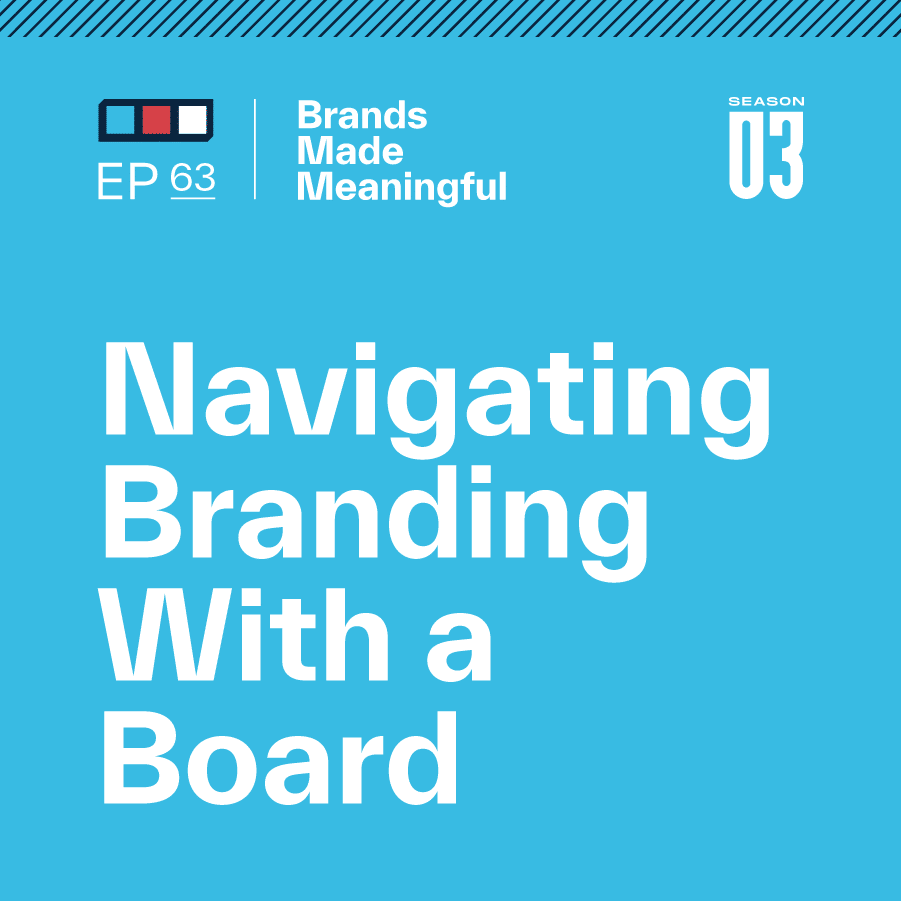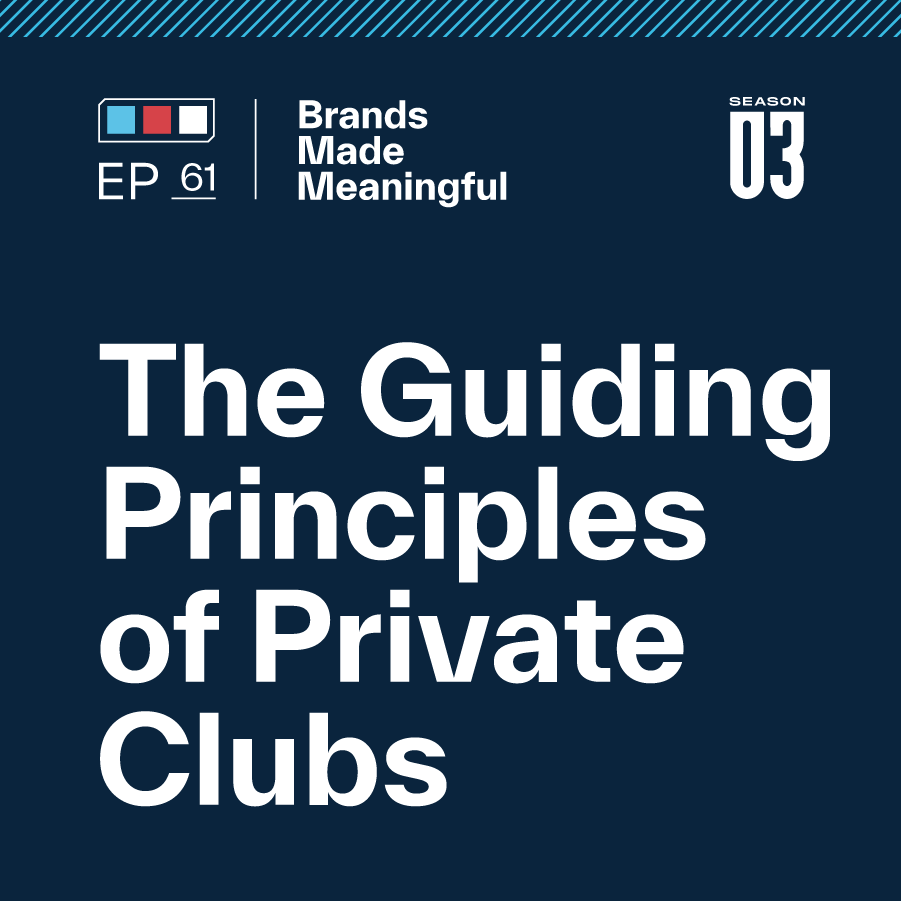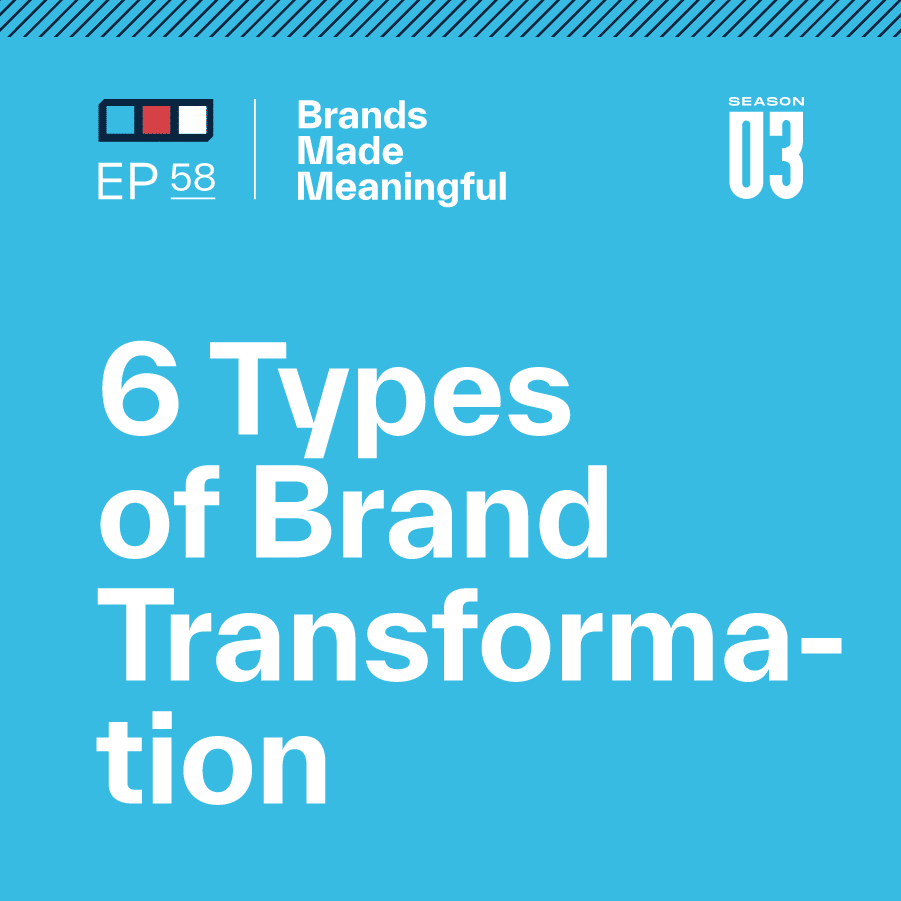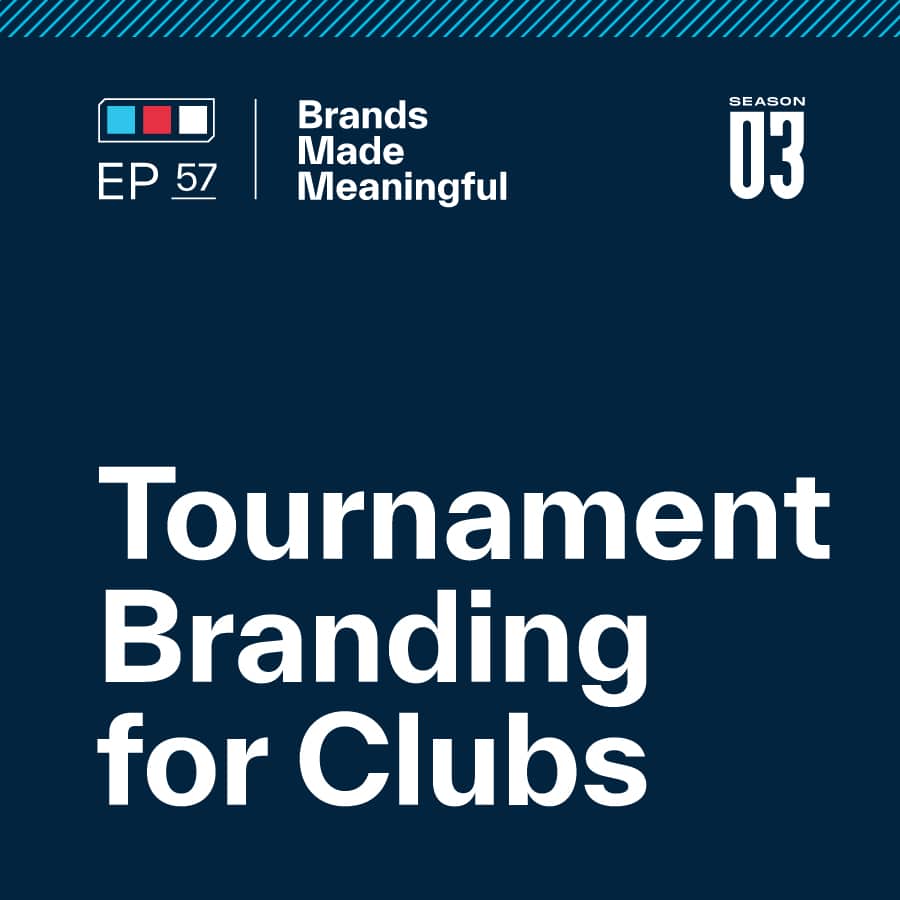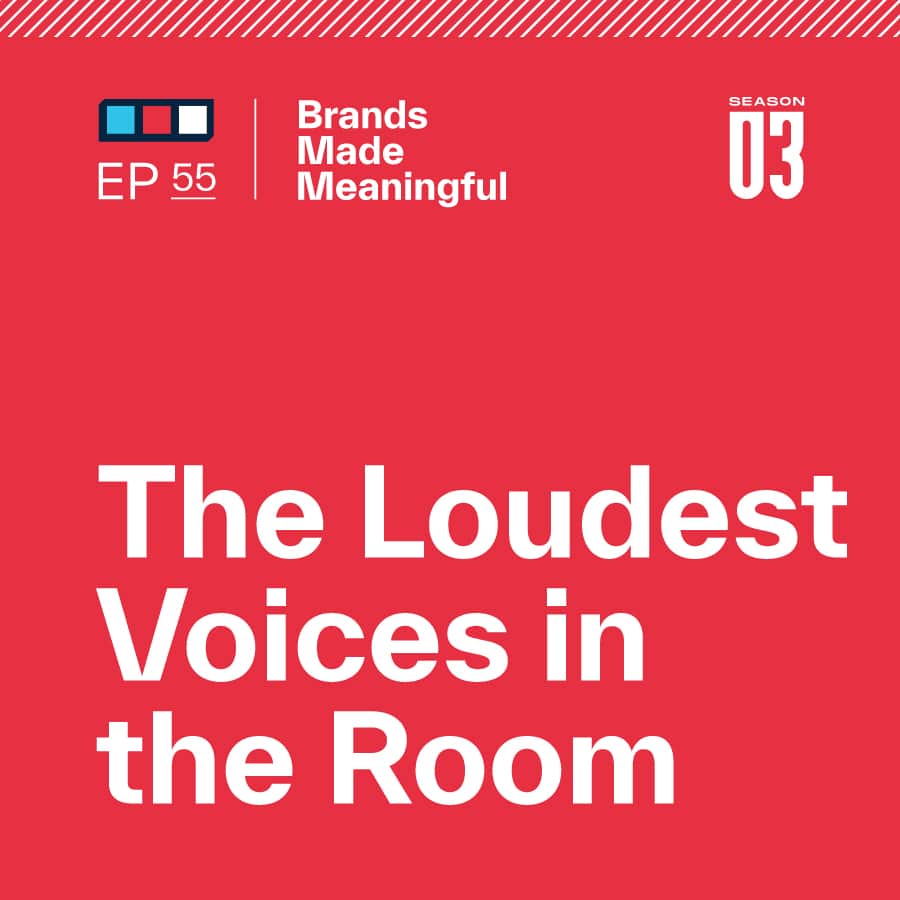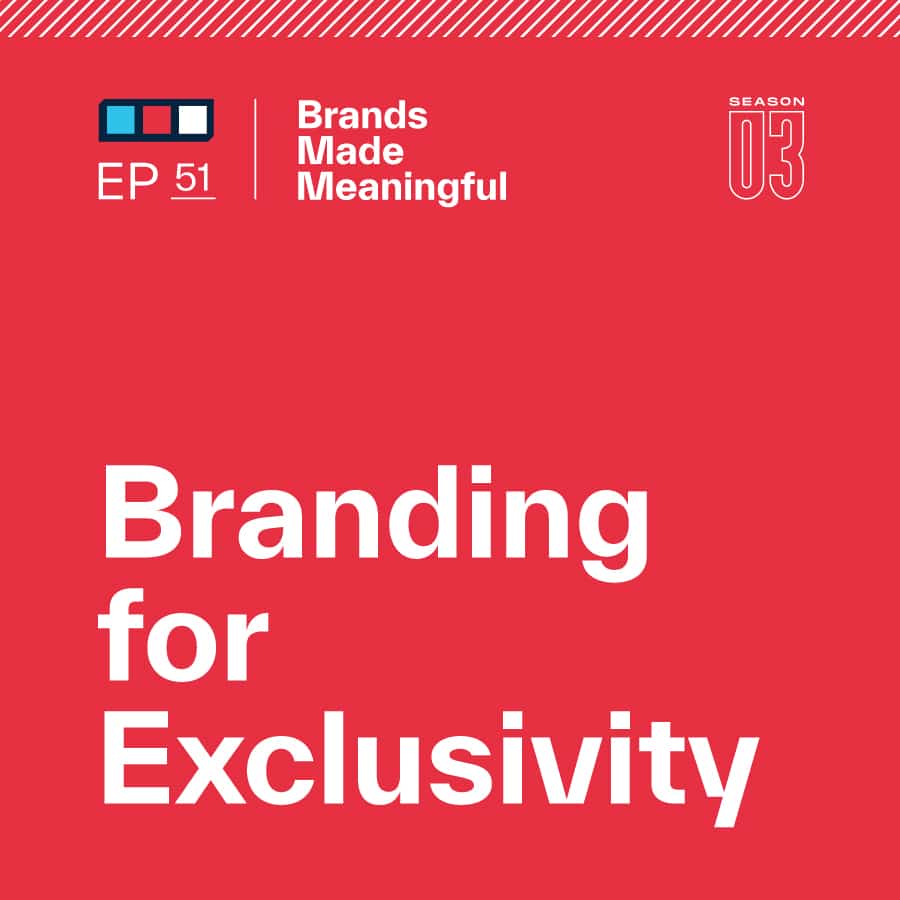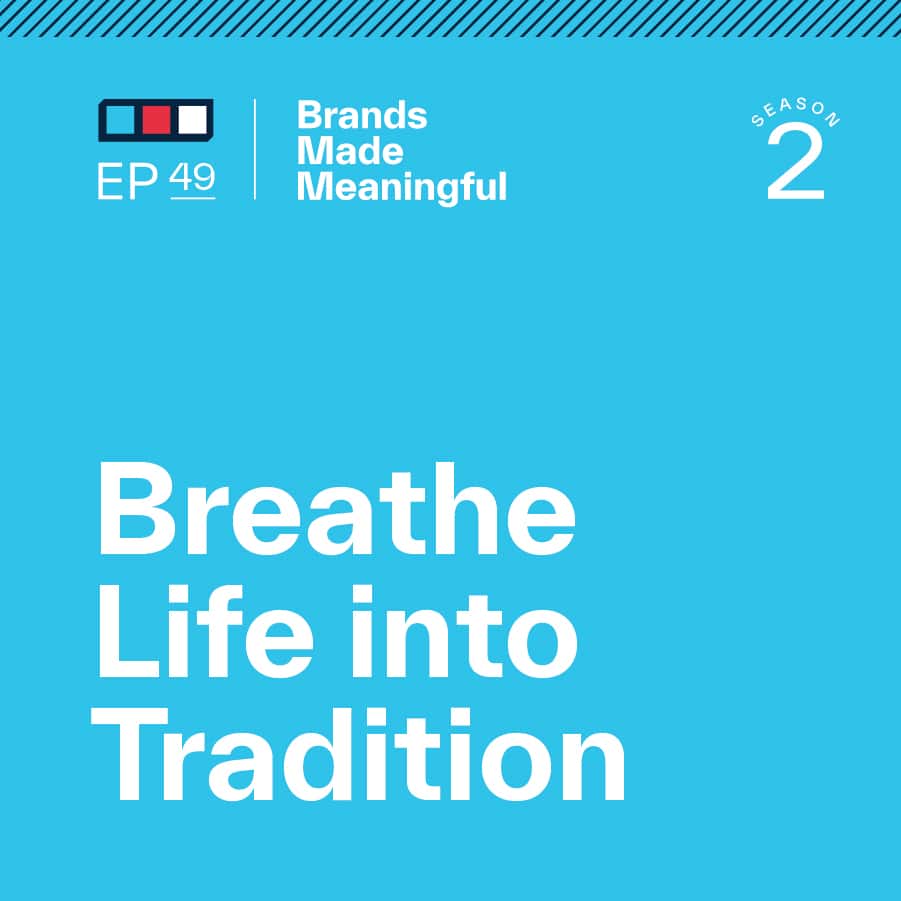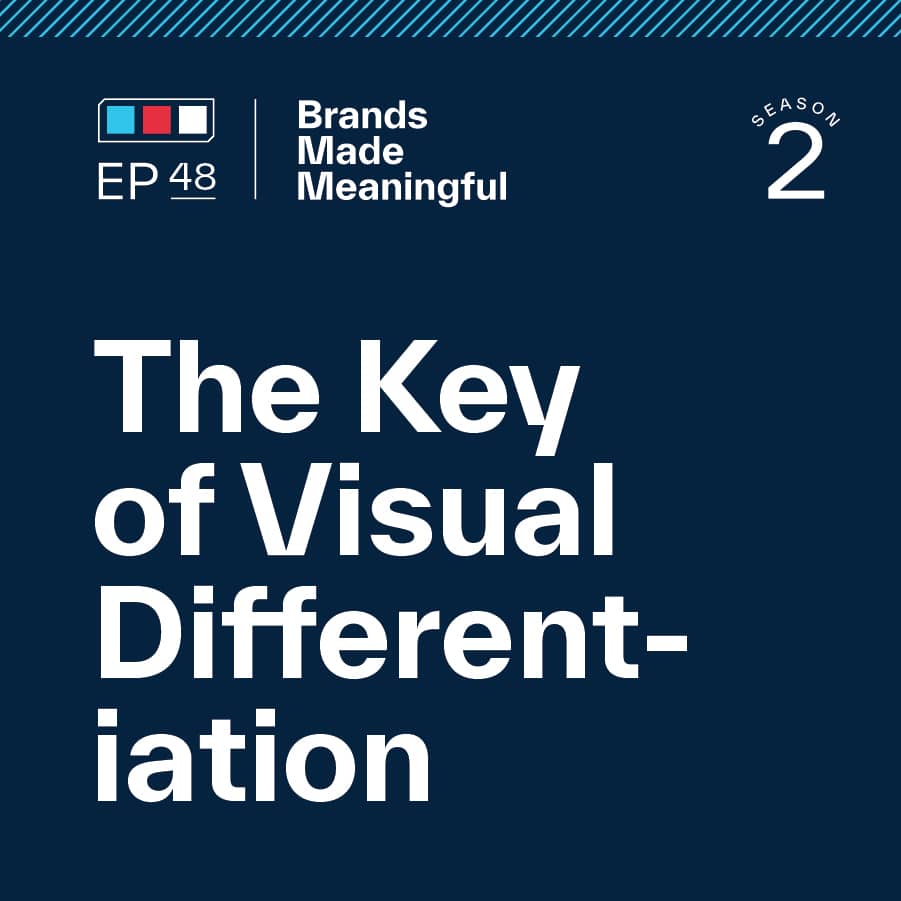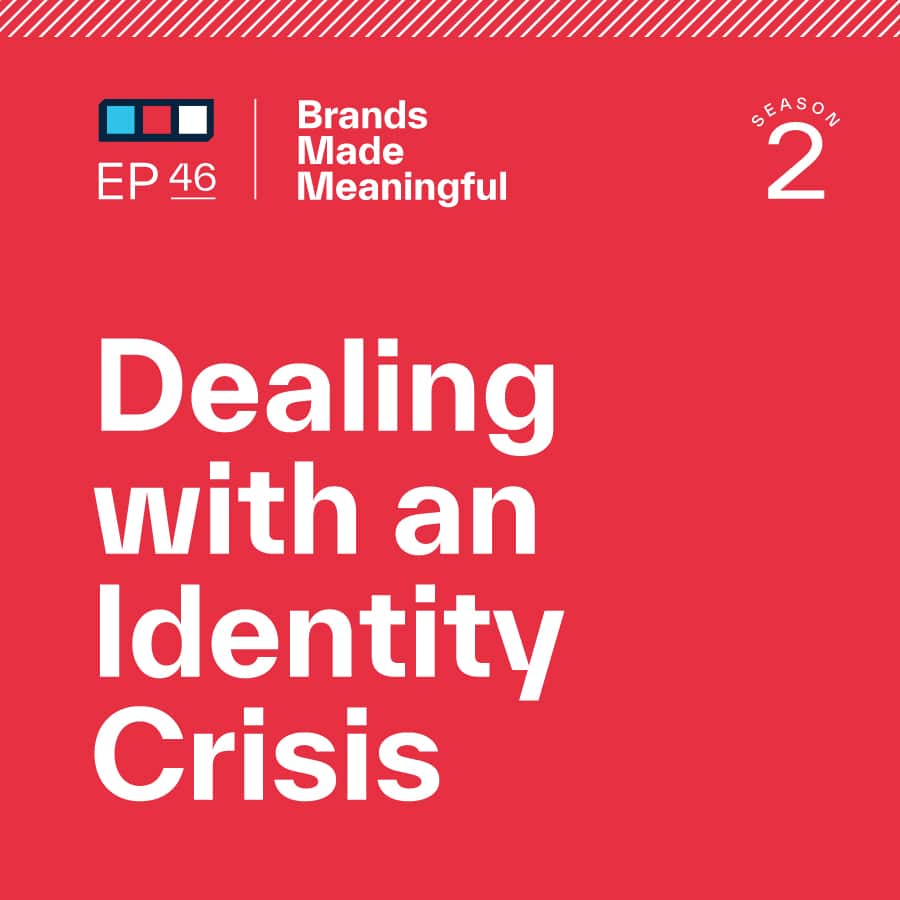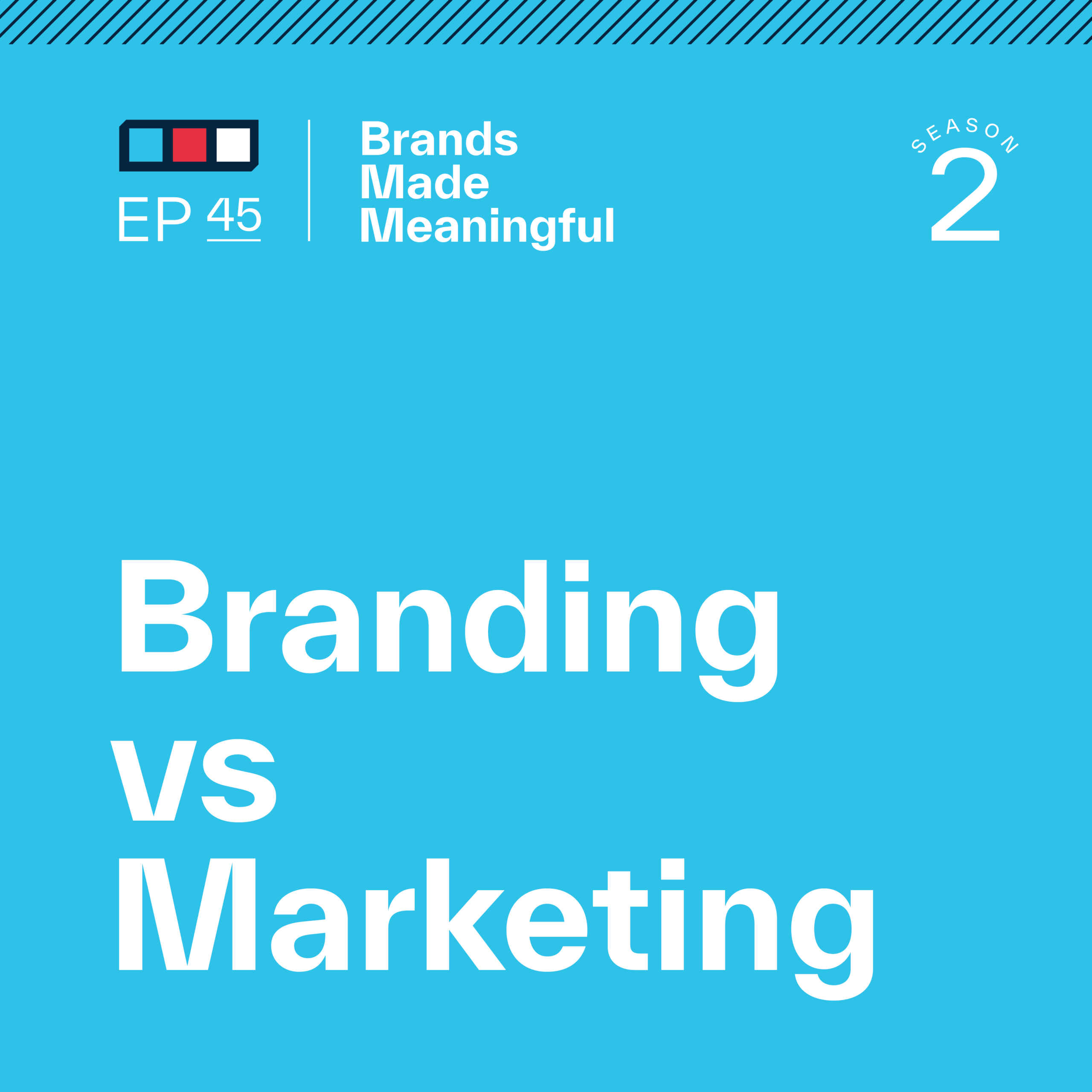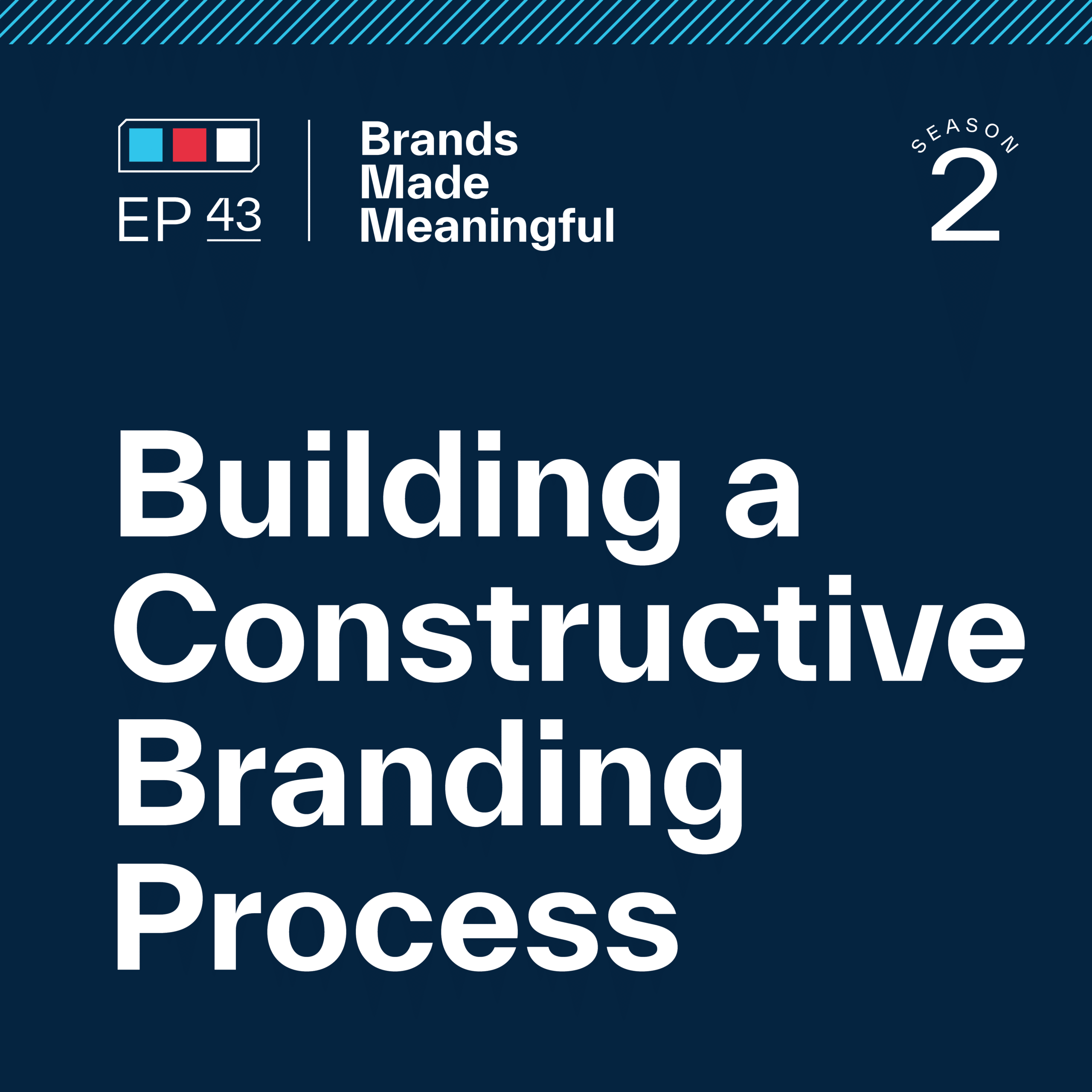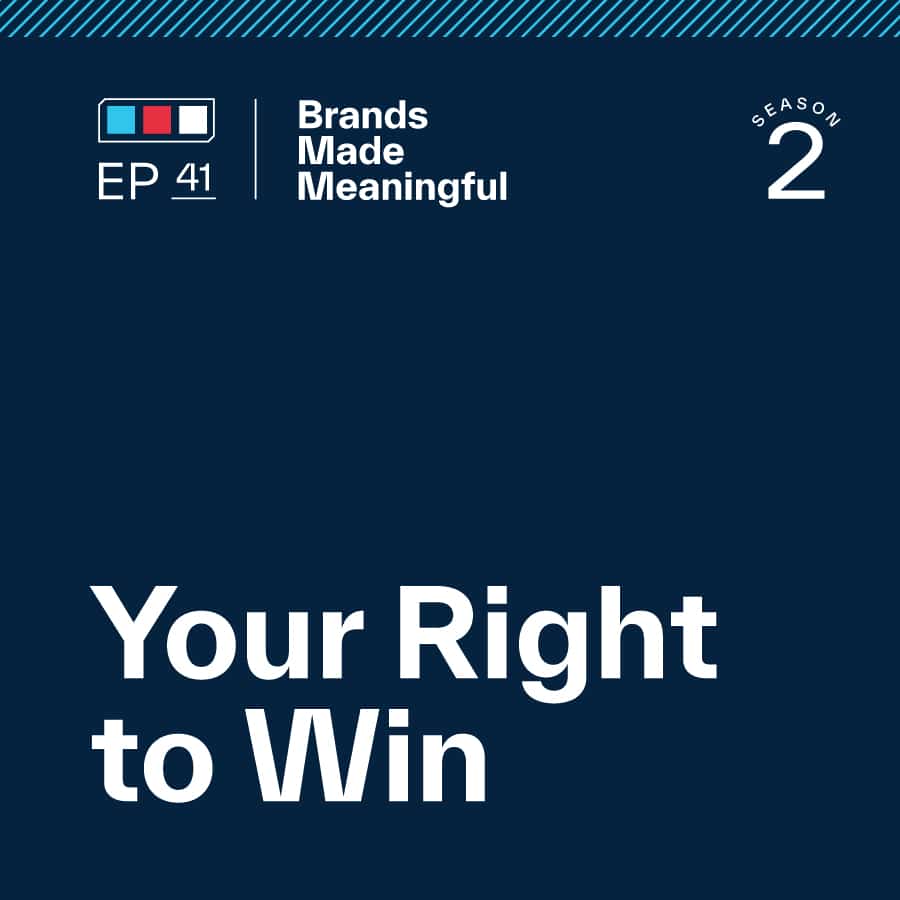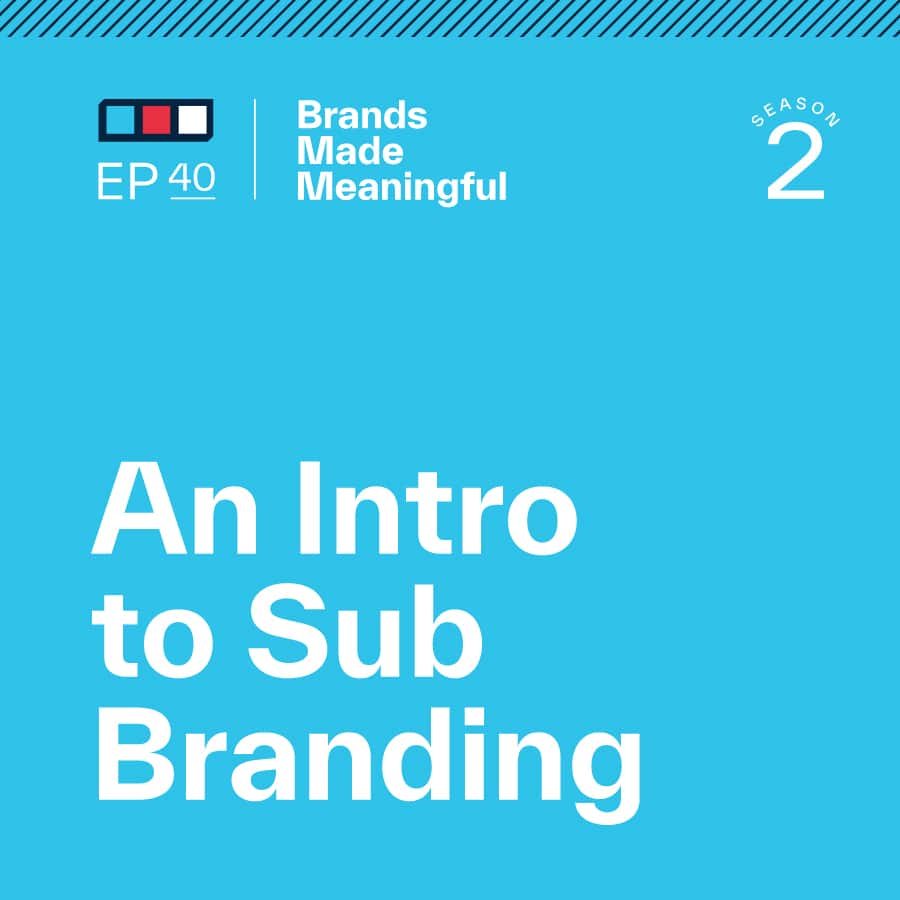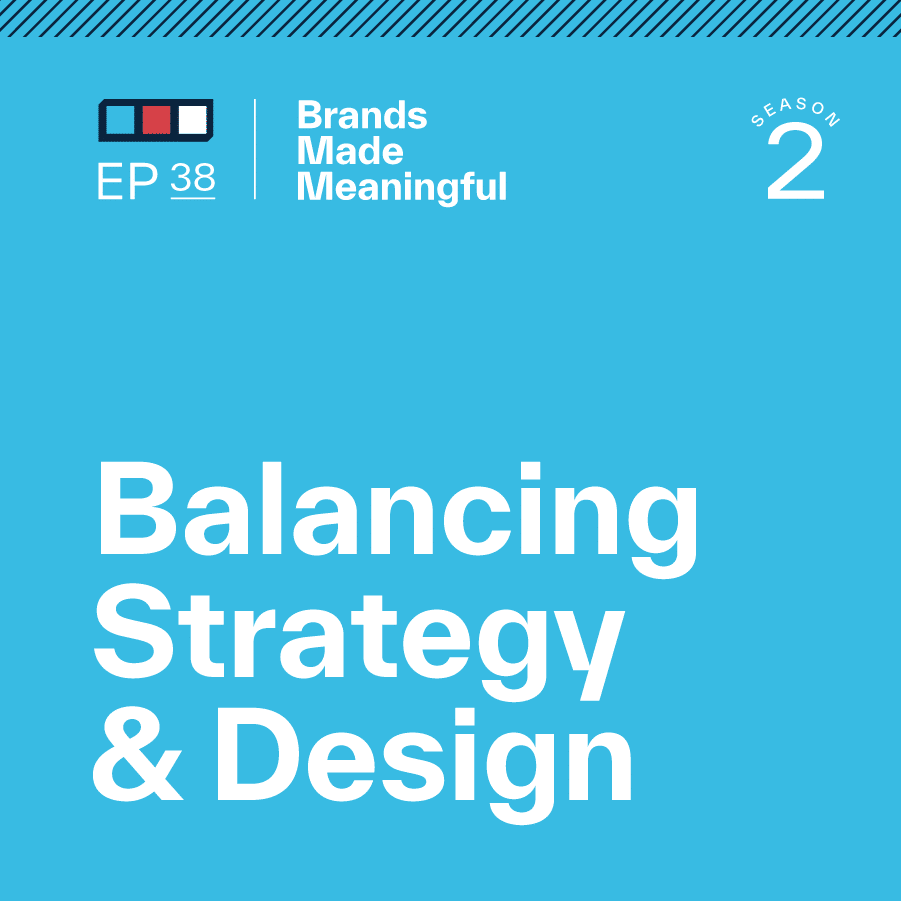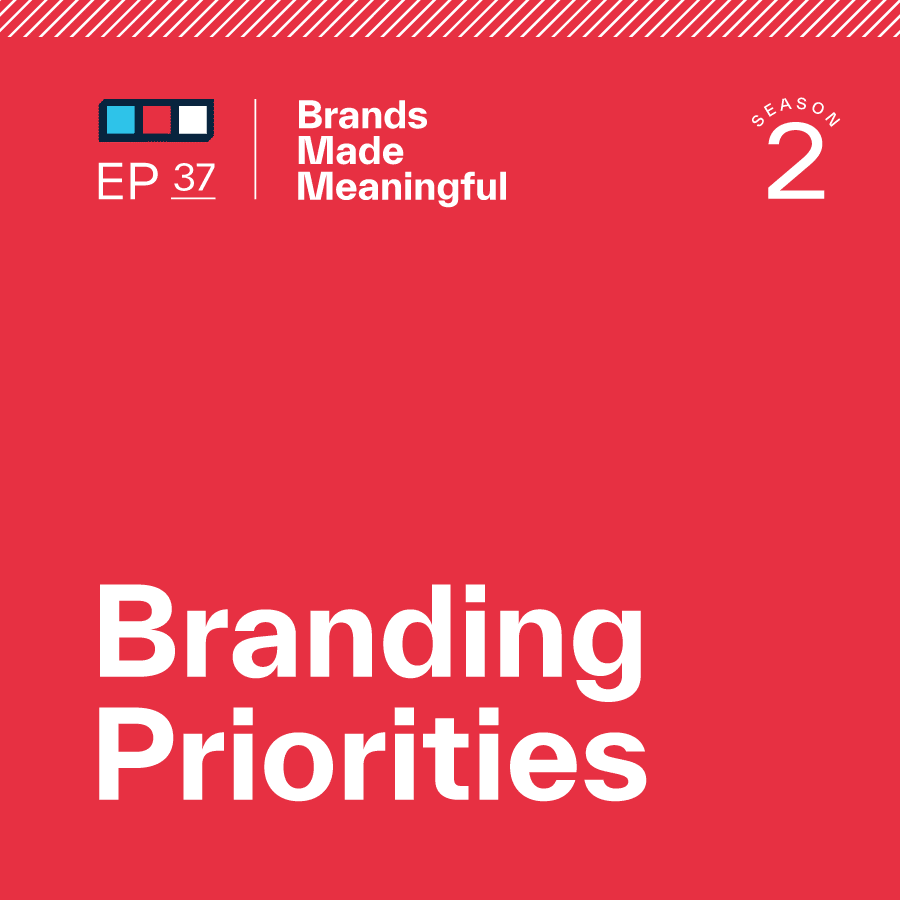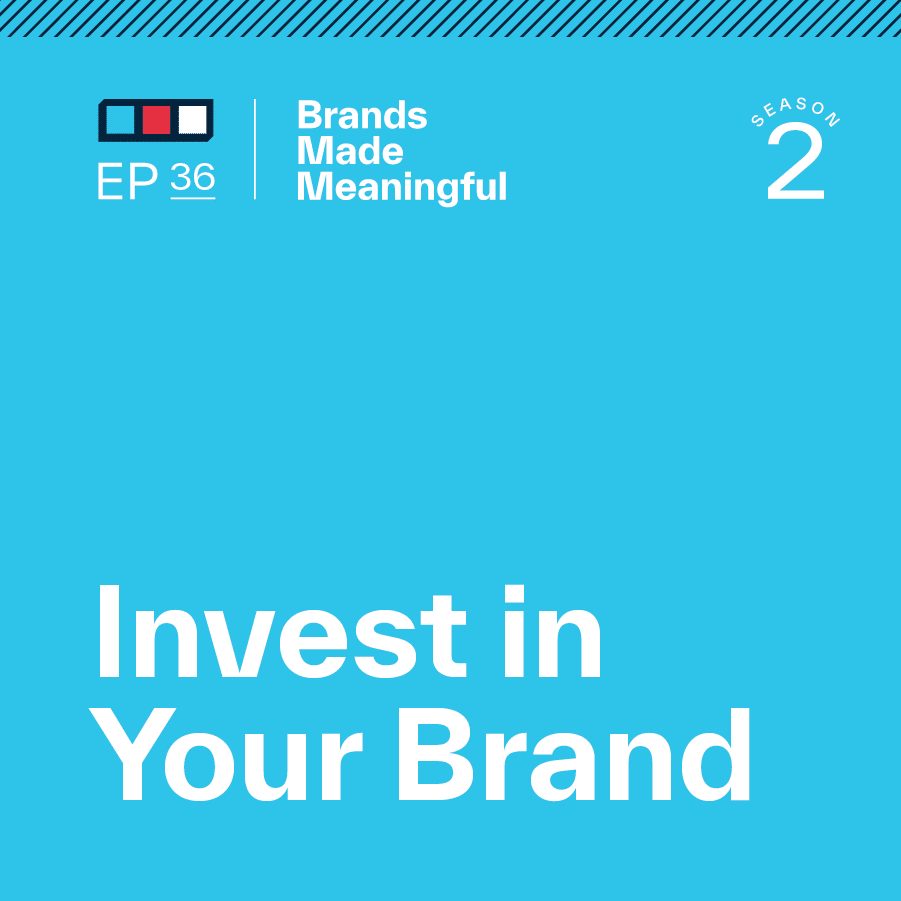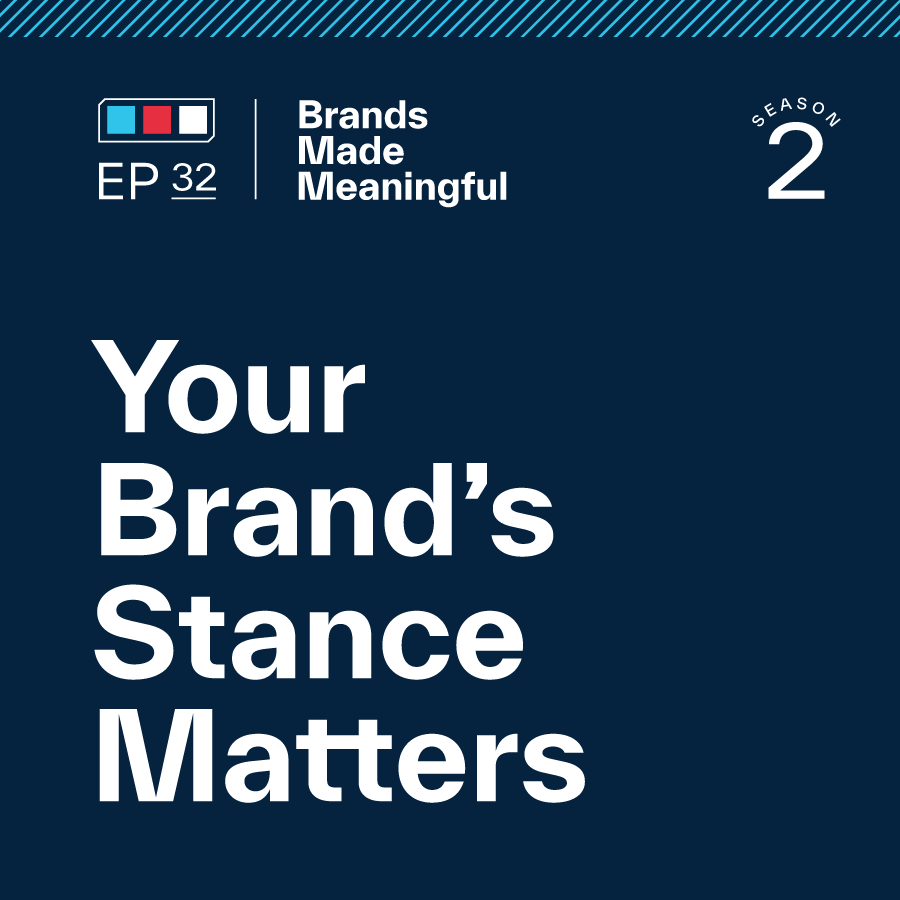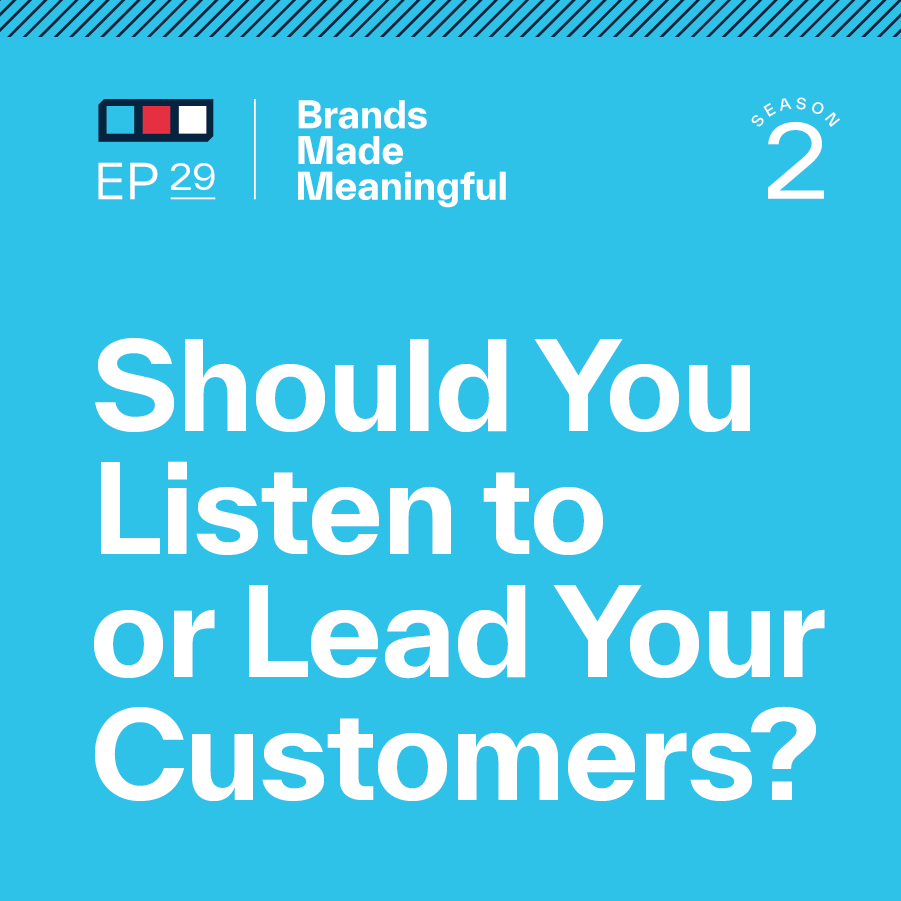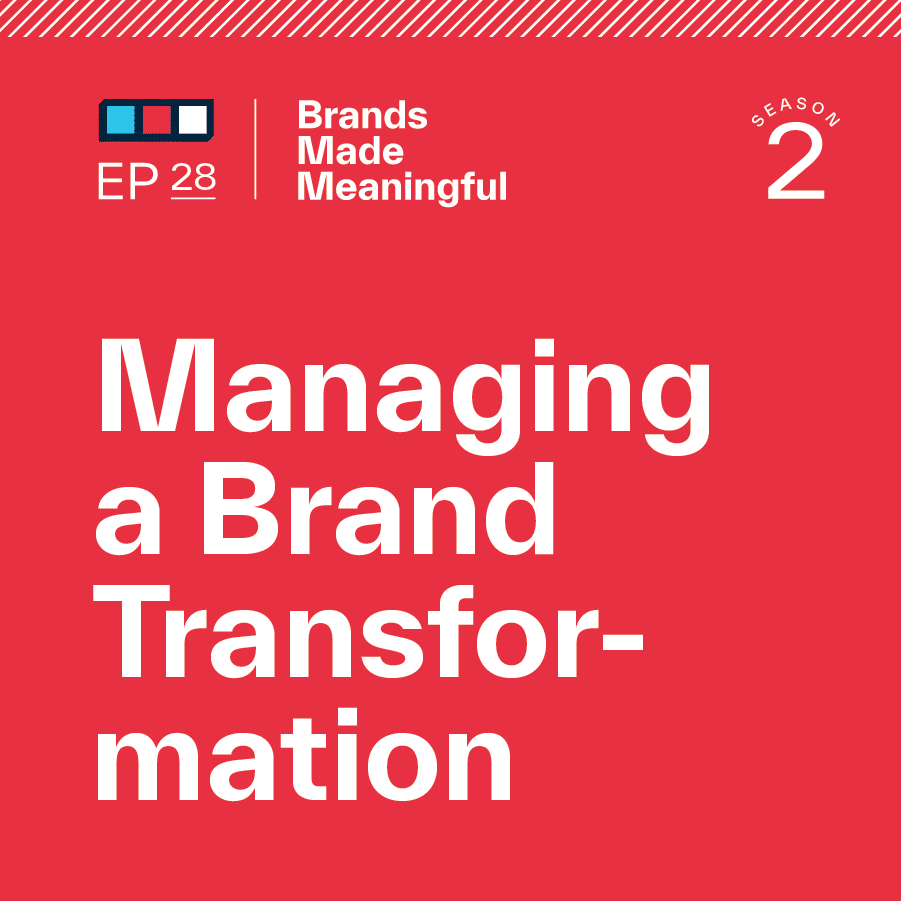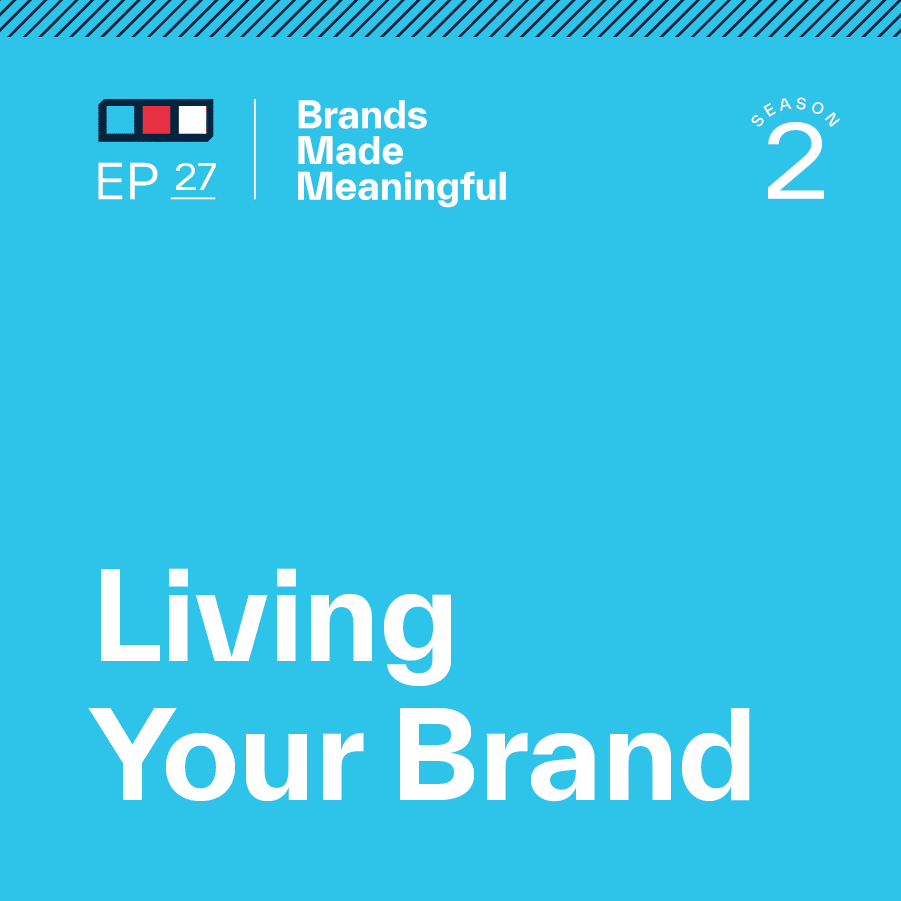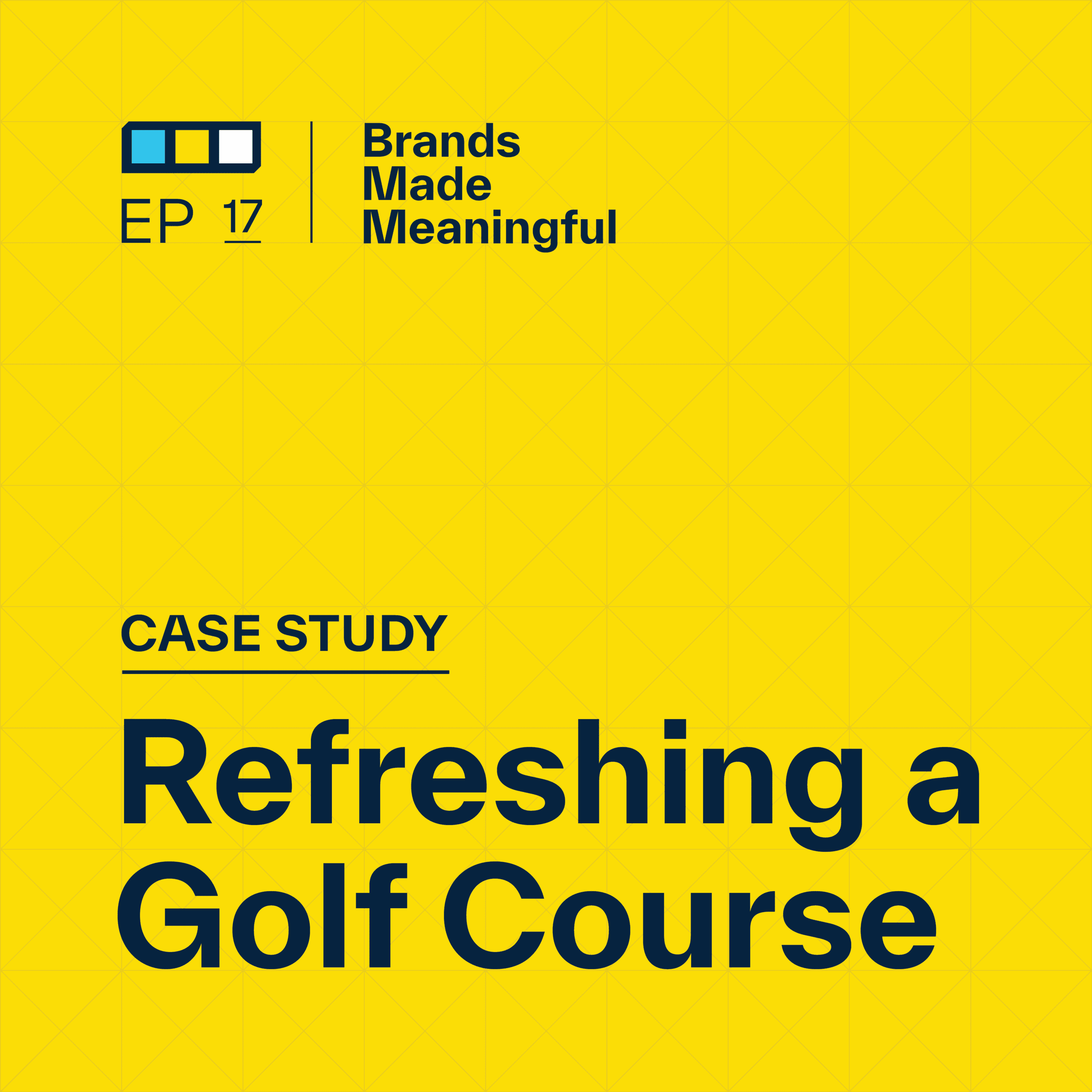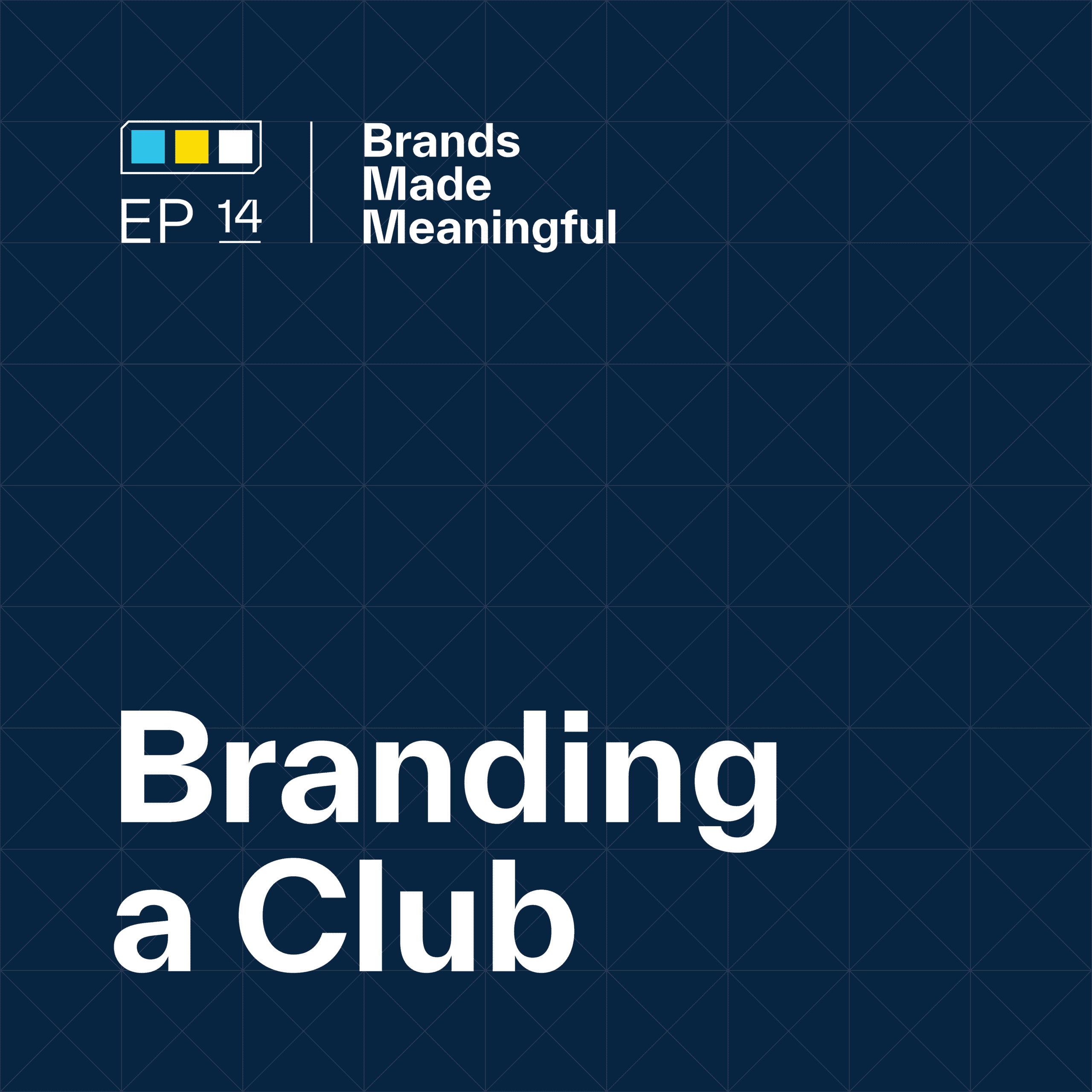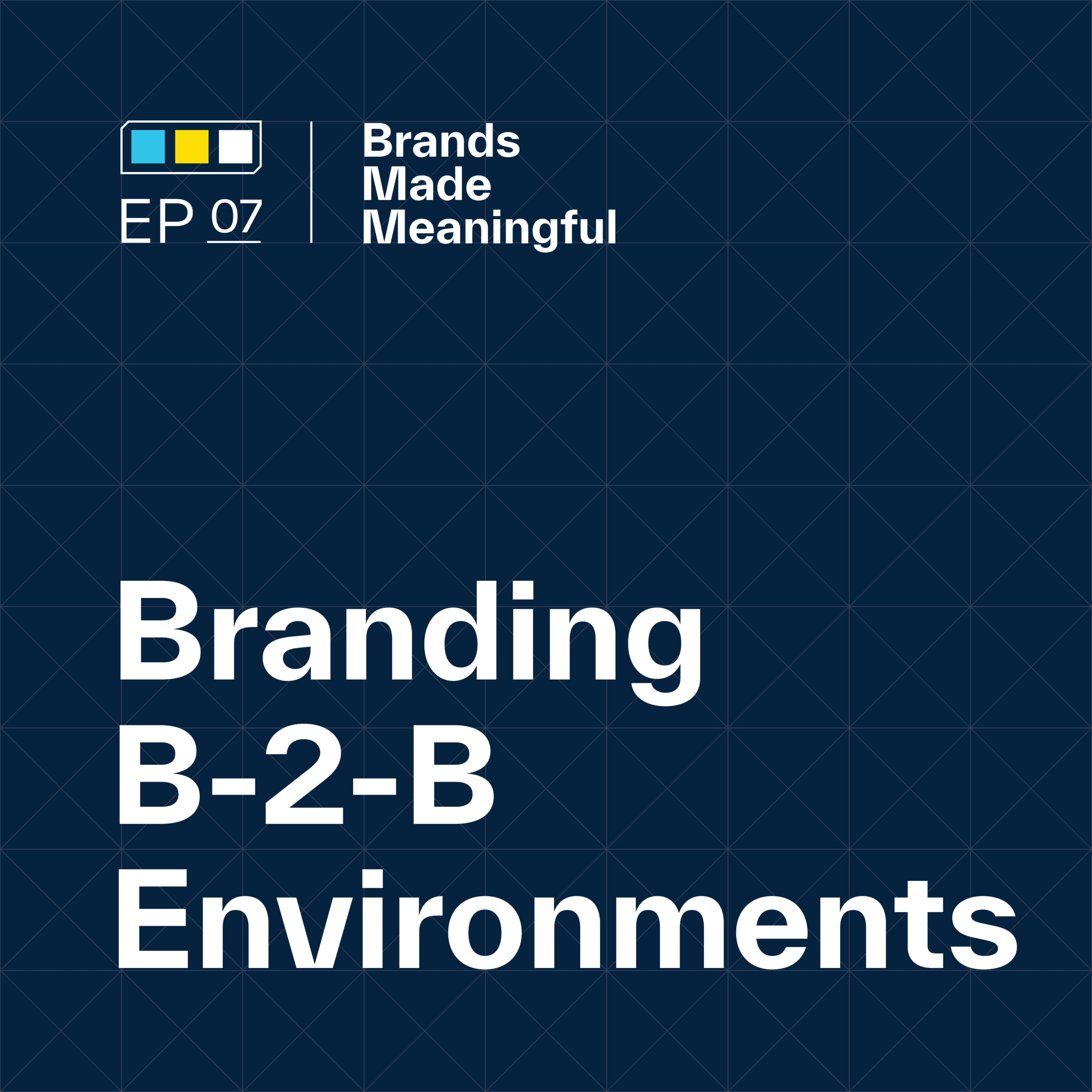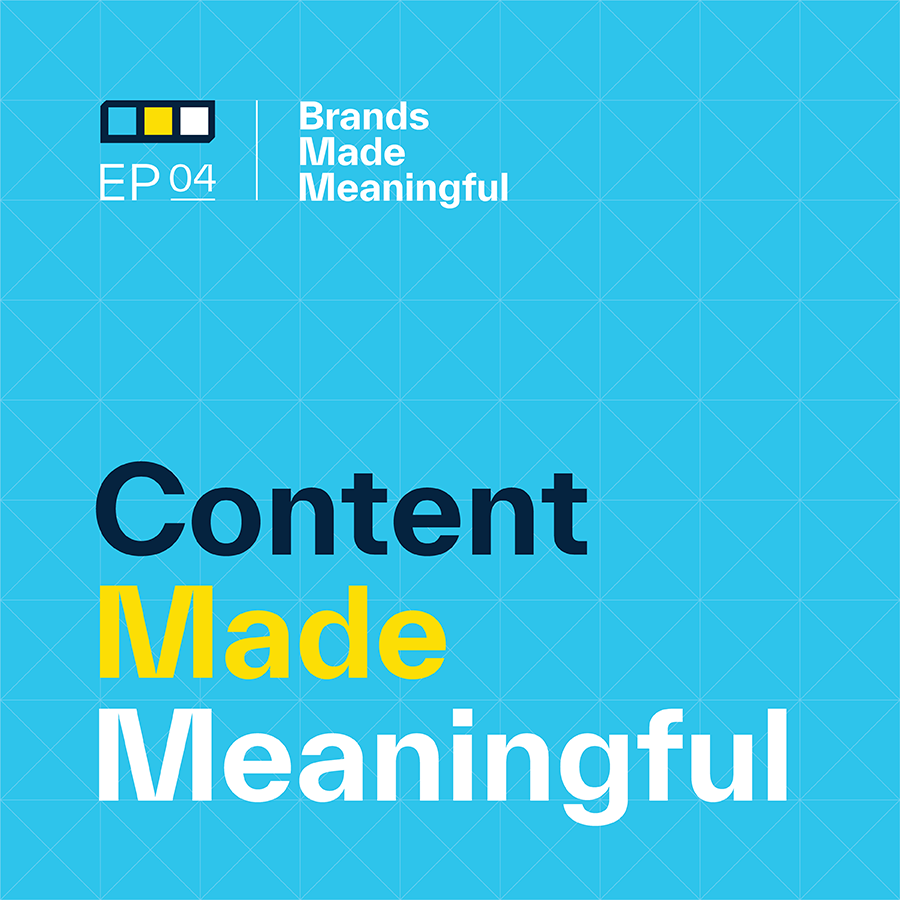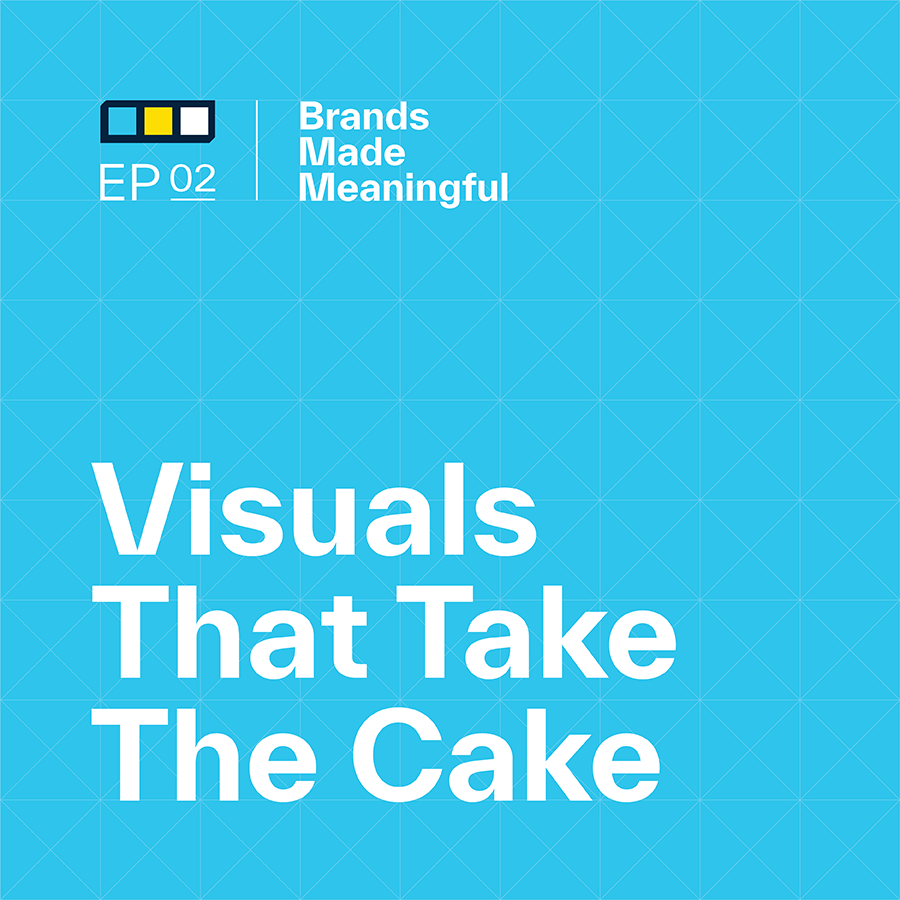EPISODE 47

Branding For Private Golf
Episode 47
Derek and Tucker discuss the intricacies and common pitfalls of branding for Private Golf Clubs.
EPISODE TRANSCRIPTION
We’re talking about golf today, one of our favorite topics and conversations.
Derek We’re not talking about golfing, golf courses, or golf equipment but golf clubs and the branding specifically of private golf clubs.
Expand Full Transcript
Derek Welcome to Brands Made Meaningful conversations with the team at Sussner about how purposeful branding inspires unity, identity, and powerful change for growth-minded organizations. Welcome back to Brands Made Meaningful. We’re talking about golf today, one of our favorite topics and conversations. We’re not talking about golfing, golf courses, or golf equipment but golf clubs and the branding specifically of private golf clubs.
Tucker However, if anyone knows Derek personally, he loves talking about golf equipment.
Derek And courses.
Tucker A little bit too much.
Derek And resorts.
Tucker Yeah, just love talking about golf, don’t you?
Derek Absolutely.
Tucker I was just at an event earlier today with a family member and someone came up and they said, Oh, you were just in Ireland. Did you like it? And someone goes, No, I don’t really like it. There’s really not much to do there. My family member leaned over me and said, he must not like golf. But what we’re talking about today is golf course or private golf branding. We’ve done a lot of work. We’ve had a lot of conversations with people in the private golf space. Think of this as some country clubs, private golf clubs that offer great amenities and great memberships to golfers and families. But what we’ve found over the years is that there is a lot of room for change in that market specifically.
Derek Before we jump into this, I would throw club communities into this too. In some parts of the country, especially in the southern part, especially in Florida, clubs include residences that also include amenities like golf. And what we’re finding is that when it comes to thinking about branding within the golf industry, this is a relatively new thing. While consumer brands, product packaged goods, and other industries have been leveraging brand and branding to their benefit for decades and decades, our understanding is this is relatively new within the last 15 or 20 years when it comes to golf clubs.
Tucker If you think of most golf branding, you think of brands like Titleist or G4 which is a really new nice brand for golf. A bunch of people think of apparel brands as golf brands, and I think that’s this big disconnect that clubs have really fallen behind in the times. They’ve really let apparel brands own the visual and verbal mind space of their members, which is interesting to me because they don’t feel like they need to have a story that is ripe to tell.
Derek People know those brands because they’re the ones that advertise on TV. People know that Nike was in the golf equipment business and is still in the golf apparel business because of the fame of people like Tiger Woods and Rory McIlroy. But some club brands have some notoriety from the wider audience. Especially if you’re a fan of watching golf TV, you might be aware of the certain clubs that host events or certain major tournaments, etc. But to the clubs themselves, the brand means more than logo and the brand awareness or the awareness that that club exists. Brand leans into helping summarize the spirit, the soul, and the culture of that organization.
Tucker And this topic really comes on the heels of our own research. We worked on a research study with our friends at Sprocket, which is a consumer insights company here locally in Minneapolis, and they really helped us understand the private golf club membership angle to understand what they care about as it relates to brand, what they care about when it relates to storytelling and perception, and those type of things. This type of research really helped us get clarity around the opportunities for clubs and what the challenges are that they’re facing when they go after these types of new members. The next generation of members is what we like to call it.
Derek So that was the key insight for me. When we compiled the data and started going through the findings, the thing that stood out the most to me wasn’t that there are different generations and different age groups and different demographics that are either members of or looking to be members of clubs. It’s specifically the very different things generationally that they want and expect from their club. What a 75-year-old club member wants and expects compared to what a 45-year-old member wants and expects are often very different things.
Tucker I think we’ve dealt with a lot of GMs and a lot of club presidents who just assume they want great amenities. That assumption leads them to just invest in certain tangible assets like their course in their clubhouse and things like that.
Derek Fitness area, restaurants.
Tucker And those are super important. I don’t want this conversation to make it sound like we don’t think those are important. Those are critical for understanding the perception of the club, too. But there’s this idea that they’ll come find out for themselves. Our club stands the test of time and they will find out for themselves and the person who’s 42 years old and is coming to our club will get it before they even walk through the door what we’re all about. And I don’t think that that’s the case.
Derek We’ve learned that the best thing to happen to private clubs in the United States was Covid. The clubs went from struggling and not being full to having healthy, full memberships and a long waiting list. So even what they want has now changed. What clubs themselves now are looking for aren’t necessarily additional members. It might be better right fit members. It’s probably staffing and better member experiences. But Covid changed that landscape.
Tucker I think that that has really opened people’s eyes to what’s possible and where they should be spending their time and their money. But what I think is getting more and more apparent from our angle as we keep talking to more and more clubs is that clubs are becoming more sophisticated. And the ones that become the most sophisticated, especially from a marketing and branding lens, are becoming more and more successful with that. The conversations we’ve had at events down in Florida or even here in Minnesota with club managers is that they’re changing and they need to change. They need to keep up with the times. Just like you need to have a new clubhouse to stay with the other clubhouse. Just because you don’t have a great golf course, now you go, Okay, we probably need to update our golf course. They’re starting to realize that the way that we communicate, the way that we have conversations, whether it’s visually or verbally, changes the way that we’re thought of in our community.
Derek And that’s part of why this matters and part of why we’re having this conversation. So even if a club has a healthy waitlist and is in a good spot financially, maybe they’ve even raised their fees and initiation dues, like we’ve learned with the club in Florida that we worked with, they’re looking to continue to elevate the perception of their club, of their brand, of how people think of them in their community, maybe even nationally.
Tucker In short, it’s just a lever that people in the club space aren’t pulling for some reason. It’s because a lot of clubs don’t pull that lever. And so then it’s not a familiar thing to be the first person to do it.
Derek They’ve been very reactionary as an industry, not proactive in being intentional. They’re intentional with who they are and who they’ve brought in in cultivating their membership and what their clubhouse looks like and represents. I think they’ve been intentional in a lot of ways. But what they’re learning now is that they are missing the opportunity to be way more purposeful in how their reputation is crafted in the community and why that’s important beyond the people that are their membership.
Tucker And as I’m thinking about it now, about the clubs we’ve worked with and even the clubs we’ve talked about that are really interested in this type of work, they all say the same thing about trying to be the best. They want to be the best. They want to be world-renowned for the club that they have, the hospitality that they provide, and the perception that they create. And that is a really interesting through line that comes through. Like it’s hard to be perceived as the best if you look like everybody else.
Derek:They’re all telling. Again, it’s not all, but most. Well, maybe it is all.
Tucker Yeah, you’re being nice. And that’s okay to be nice because, naturally, that’s who you are.
Derek So these aren’t my words, but words from somebody who comes from the club. We come from a branding lens, from our experience working with companies and organizations within sports, and how that expertise can apply to the club industry and golf clubs in particular, to help them. We don’t come from the angle of hospitality or as people who are into turf and grass or architecture, etc. This is a specific branding lens.
Tucker So you were talking about someone in the club’s face.
Derek They said that the former mindset of clubs was prestige, tradition, and telling a story that is their history. And the new mindset that the new up-and-coming demographic of members is looking for, that the new way to think about this and what they want, is community socialization. They want a place to belong and they want to understand the purpose of this organization that they want to be part of or not.
Tucker They want something that shares their identity. Think of a lot of members at clubs. They wear their club badge on their heart because it is a part of their identity. They meet people there. They have friends there. Those are the type of people where you go, Oh, are you a member there? And they go, Yeah, that’s right. That’s where I belong. There’s an impact in that.
Derek Golf clubs, unlike a lot of businesses, have an incredible advantage when they do this right because the people, mostly who are their members, really want to be members there. Imagine having a business where people were proud to don your brand, don your logo, don the symbol, and pay a fortune for the clothing that carries that symbol at the same time. Consumer brands that you see in retail stores would kill to have that kind of passionate fan base. So talk to them. Nurture that. Teach them. Bring them along. Invite them in. Invite the right ones in.
Tucker There’s a level of complexity that comes when you talk specifically about private golf club brands – even that’s a mouthful kind of on its own. But this idea of the brand isn’t the leadership’s brand. We work with a lot of organizations where maybe the CEO says, This is my brand and I need to live it. I need to spread it out and do all these other things. And the people that I need to focus on are my customers. But for some reason in the golf space, the board of directors at most of these clubs feel like the brand is theirs and it’s for them, and that’s all that matters. And I think that that is just such a shame. They tend to listen to the loudest people in the room instead of listening to the most important people in the room.
Derek The clubs that were coming across and talking like that are changing that mindset and have boards that are allowing the GM, a visionary general manager most of the time, to start to run that club like a business in a way that it’s for the entire membership and it’s not for the five or eight people that are on the board. I don’t want to get into governance, and I know this is the thing in the golf club industry, but that is not our expertise in any way. So I’m not going to get into that. We’re talking with a club in Florida that’s part of a 600-home community. So they have something like 12 or 1500 members that are part of this club that includes golf. The club is way more than a golf club. So they have 1200 people who care passionately about their membership.
Tucker And I think the big challenge is that there are a lot of opinions. Who’s right? Who’s wrong? Whether you look at it from a right or wrong lens or you look at what we are trying to accomplish here and who is this brand for. Some of the most successful clubs that we’ve worked with have known that what they’re building is not for the people that are there today but for the next generation of members.
Derek So fire up a few red flags. If a club hasn’t been paying attention to their brand, which we’re finding happens often, what are some symptoms or red flags that clubs might be experiencing that might say, Hey, we need to step back and think about how we’re telling our story?
Tucker I think the biggest one that I’ve seen is that their membership isn’t evolving as quickly as they would like it to. So there’s a lot of clubs who say, Well, we would really like to get our membership to have an average age of whatever, 65, and right now we’re sitting at 75. So how do we do that? That is for us to go, If you’re not doing that successfully, you’re not attracting the right fit members.
Derek We had a confidential conversation with a GM of a club who was complaining to us that even though their membership is full, there are a handful of members who are no longer a right fit for the culture of the club – that those members are actually holding the club back. Loud voices, as you said, are preventing the club from evolving and going to a little bit of a new place, a refreshed place, so to speak. This GM was expressing his frustration with how to deal with these members. Because of COVID and all these clubs having a waiting list, the members who are basically unhappy and complaining about some of the changes the club is trying to implement have no opportunity to join other clubs in the area because they’re all full too. So it’s interesting.
Tucker So even if they did leave, then where are they going to go? And so they may stay or they plan. And that’s just what it is. So the big thing for me is that membership isn’t evolving. You’re just not getting to the place where you say, Wow, our spread needs to be better or our demographic is shifting and we want to be this type of club, but we can’t be. Why can’t we be? We’re changing our clubhouse, we’re changing our course, we’re changing all these other things. But it seems like it’s not attracting the people we want it to. That’s a great red flag for a brand. Your brand probably isn’t attracting them. We’ve talked with other clubs nationally that say, We just can’t get people to stop calling us an old person’s club. That’s super hard to say we’re in a dated perception. We invest in this and we’ve changed this. And now that that’s changed for them, how do you attack that problem as a general manager and not understand the brand lover can be pulled? I don’t know how you would attack that. How do we change our external perception of ourselves if all we’re going to do is change things from the inside? That’s a great question. It’s a really, really hard problem to overcome.
Derek I think the second, and maybe equally as large of a red flag, is having employee problems – either employee turnover or a hard time recruiting new staff. We’ve mentioned a club that we had a conversation with, and when we brought up the word branding, the first thing that they answered back with was, Whoa, whoa, whoa. We don’t need a new logo. We’re 100 years old. We have a lot of equity in this logo. We will never change our logo. Which is 100% understandable. But then she followed up by saying, But you know what I really need? We need more staff and we need better-fit staff that fit our culture, that stay longer, and that understand who we are and that want to work here, whether they’re golfers or club members or not. We need more, better people.
Tucker We need people here that come excited and want to do their job because they know what story we want to tell and they want to tell that same story. So I think the challenge is that most clubs try to get butts in seats because it’s hard to get people. That’s totally fair. And there is a challenge there. But wouldn’t it be awesome if you could attract people that believe the same thing you believe because you can then rely on them in different ways to say, Well, now Sarah gets it because Sarah’s here for the same reason I’m here and we believe in this and this is how we come to work and this is the culture we’re trying to create? Here’s the membership that we believe we can have. That’s powerful. There’s a lot of power in that, and it gives people a sense of relief, especially when you’re an employee. Speaking as an employee, I know because it feels like, Wow, we understand who we are and that’s awesome.
Derek If you’re telling a story that is only about your history, that is not a reason why this person is going to choose to come to work with you because they’d have no idea where you’re going.
Tucker In that study that we referenced earlier, we asked members across the board probably 12 different things. When you’re picking a new club, what are the top things that make you excited about joining that club? And history was on that list. But out of 12, I’m pretty sure but I’d have to go back and look at the data, but I’m pretty sure it was nine or ten out of 12 said, I don’t really care about the history. And that was across the board too. The people who really care about the history have been there for about 25 years. Those are the people who want the history.
Derek History is important. I’m not downplaying that at all. It’s a critical part of the fabric of the organization, why it was there, why it’s remained. If you have a history, there’s a richness to why you’ve lasted this long. It just needs to be put into the proper context so that you can say based on this history, this is where we’re going, this is what we’re doing. Like any business, you have to continue to grow and evolve to stay relevant and healthy.
Tucker I look at history as the cherry on top for clubs to be like, We’re a great club that believes in this and we’re trying to be this and we attract this type of member, and here’s who we’re for, and here’s what we do. And by the way, we’ve been doing it for 55 years. That’s authority. That is awesome.
Derek We just rebranded a golf club that basically has no history.
Tucker Well, they say they have no history. They have a history.
Derek They have 30 years of history. And actually, there are some nuggets that are very rich and very meaningful. But they didn’t wear that on their sleeve or feel like they hadn’t hosted major championships or the land their ground is on wasn’t a former something interesting or there weren’t some pirates who landed on the southwest coast of Florida.
Tucker Everyone loves pirates. Why does everyone love pirates?
Derek Pirates are cool.
Tucker I just don’t get it.
Derek Pirates are very cool. The rebranding and the retelling of their story, while they thought it was going to be hard, was actually easier because they weren’t stuck in their history and they were totally ready to look ahead and look forward.
Tucker The private golf industry skews older. There’s really no way around that. I think that as a culture, we just assume that older demographics don’t care about some of the stuff. Some of the best clubs we’ve worked with have a membership average age of 75 years old. When you treat them as if they have something to look forward to, then they do look forward to it. It’s not like, Well, you’re 75, so it’s time for you just to have things the way they are. And I think there’s just a stigma that goes around that if you change too much, they’re going to get really upset. But if you change for the right reason, they don’t.
Derek We’re not talking about changing for the sense of change but changing to stay relevant, healthy, and robust to a certain extent. So we’ve witnessed a handful of pretty amazing impacts and results. A couple of really fun short-term results have happened from a handful of clubs that we’ve worked with. What are a couple of notable ones?
Tucker Merch sales is a big deal – something that we knew would be a big seller for a lot of our customers. But merch sales is crazy.
Derek It’s just straight revenue.
Tucker We’ve done this with a good handful amount of clubs now and one of the clubs came back to us and said, In the first week we made like ten grand in profit just on merch.
Derek In the first week.
Tucker It’s like, Wow, are you serious? That’s cool. There’s this idea that changing is okay and changing can be hard for a lot of people, but freshness is really nice. It’s like when you paint a room and you feel clean and fresh and you kind of want to hang out in that room a little bit more than you used to. When we go to a club and we work on this stuff and we have these conversations, and we build this refreshed look, people love it. People love to wear it, which is fun. It’s a cool balance of getting that going. That one was more of a tangible one, but a squishier feedback piece that we’ve gotten from a couple of clubs is that people are excited to be there again. People are really excited to say, Okay, what are we going to do about this now? We had a club where we redid all their visual and verbal brand and walked them through all that stuff. And then they go, Let’s change our golf flags. Let’s do that. That sounds really fun. What could we do? Let’s be different. Let’s do something different. It’s like you kind of get the ball rolling. We could change. How should we change? And people just take it and run, which is really fun.
Derek We surveyed that membership and we asked them a variety of questions for us to get clarity on the brand, the perception, the personality, and the spirit. But we uncovered a variety of other things that came out of that. That momentum carried through and they’re renovating their patio because it turns out their members wanted another place to sit in the sun after their round of golf and share a cocktail. It seems like kind of some common sense thing. But to hear what they want and for that re-energizing momentum to carry through – this is a club in Florida that we’re talking about and their memberships are just going back now since most of them live in the northern part of the country. I’m getting a couple of emails that they can’t wait to get back.
Tucker I’m just talking about cool things that have happened. But a big impact that happened to show that people loved it is that when we rolled out this one club, this new brand, we gave everybody a welcome-back gift. It was a box that had a hat and some golf balls and some stuff in it. It also had a letter that said, Here’s the story of us. Here’s what we’re all about. Welcome back to our new club. Which was really cool and really powerful and I thought it was awesome. And we got a note from the person who was leading the project down there who was amazing, by the way, and she said a cool part about doing this is seeing all the people wearing their hats the next day. There are people who would have just been like, Well, they gave me a hat, whatever, I’m not going to wear it. But she’s like, I see people wearing them. It’s like the unity and the celebration and the coming together to be together is really, really cool.
Derek Some of those people that were wearing the hats were people that the committee had identified as people that they were concerned were going to be the hardest ones to adapt to the change. Some of the ones that they thought would be the biggest detractors ended up being some of the quickest adopters of the new story. So if a club identifies a challenge, if they’re experiencing one of these red flags or symptoms, what are two or three things that can help them take a step towards solving it?
Tucker I think the most impactful thing you can do is survey your membership. And I know that there are consultants out there who will survey your membership for you. I think that’s fantastic. Make sure you ask them questions about the way that we look, the way that we are perceived, the way that we tell a story, and the way that they care about how they belong. If you get to some more of those squishy and creative conversations, you’d be surprised by how many members come back to you and say, You know what, I think we could be better. Or, you know what really inspires me is this. And it can easily help you improve the experience by just changing those small things. Like you were saying, a club said, Well, what do you guys want? They said, You know what I’d love? It’s just patio space because I just love to be outside. And that’s not very hard just to ask some of those questions. So surveying your membership is huge. Another one would be to critically analyze yourself from a brand perspective. And I know it’s easy to think brand equals logo and Derek talked about it earlier. It’s not necessarily brand equals logo. There are a lot of clubs out there that could be speaking better, that could be communicating better. When you do monthly emails out to your membership, what are you saying? How are you saying it? Are we conveying the personality that we are trying to put out into the marketplace? We should be doing it for our current members just as badly as if we were wanting to attract brand new members because there’s this level of, Oh, we already have them, we don’t need to keep selling them. I think the age of members becoming more critical means that we have to keep selling them on the club that they own or have purchased into or are members of.
Derek Selling is a tough angle or tough word. I would say reinforcing, reassuring, re-energizing, telling, reminding people, not directly, but indirectly through communication and customer service and hospitality that you love the fact that they’re there and that you know that they’re an important part of your organization as their membership.
Tucker As I said, a logo is not a brand. But when you look at some of the visuals, do they convey what we want them to convey?
Derek And they probably don’t.
Tucker And they probably don’t. Think about that story. Think about what you’re saying without saying any words. If you look like a dated municipality course and you just look like everybody else, think about what that says to someone who doesn’t know you. There are people who move across the country all the time who don’t know anything about you, who don’t know what your history is, and who don’t know what you mean to this area. And they’re going to make an initial reaction based on looking at you. I hate to say that, but people do judge books by their covers. It’s 100% right. It’s just unfortunate.
Derek Another stat we found in our research is that the first thing they’re going to do is go to your website. If they’re under the age of 60, the first place they’re going to go is online and they’re going to do some research on you and they probably will acknowledge your history, but that’s not what’s going to get them interested in how you present yourself. Just like how you dress, how you present yourself, how you look, what colors represent you, the language on the top of your homepage is going to be critical in helping that person understand if they’re for you or if you’re for them.
Tucker This is the last thing I’ll say about a logo. But think about your logo and think about how much your initiation fee is. And I know that it’s not 1 to 1, but does that logo represent the amount of money you’re asking someone to invest in you? I know they get a ton of other things with it. I know they get a golf course and they get amenities and they get service and they get hospitality and they get all of that. That’s great. But does that logo, does that visual brand, communicate the 15, 30, 50, $60,000, $120,000, sometimes even more than that, that you’re asking for them to invest? Would you do that? Would you think, Okay, hold on, this looks weird or that looks like it isn’t worth what I’m paying? It’s worth trying to do that kind of exercise. It’s a very interesting one if you start thinking critically.
Derek Just a simple exercise. And if you work at a club, you might do this anyway. But just go grab the ten logos of the clubs that you compete with for attention, not only member attention or perspective member attention, but especially employee attention. Who are you competing with for staff? Put those 10 or 12 logos all on a table and I’m going to tell you, nine of them are going to look the same. Nine of them are not going to be differentiated in any meaningful way to that uninitiated person. So it takes a hard look and a critical eye. You have an opportunity to stand out. You have an opportunity to be intentional in how you look, how you talk, the tone of voice you use, and how you tell your story to the world. Take advantage of it.
Tucker It’s a great way to sign off right there.
Derek Perfect. Until next time.
Tucker See you on the golf course.
Derek Sussner is a branding firm specializing in helping companies make a meaningful mark, guiding marketing leaders working to make their brand communicate better, stand out, and engage audiences to grow their business. For more, visit Sussner.com.
More Episodes Like This
Building Brand GuidelinesEpisode 65
Derek and Tucker show us how to build infrastructure guidelines to unify your brand experience across the board.
Club Identity SystemsEpisode 64
Derek and Tucker cover what Identity Systems entail and how to discern between internal and external methodologies.
Navigating Branding With a BoardEpisode 63
Derek and Tucker bring clarity to uniting your company under one cohesive vision.
Putting a Committee TogetherEpisode 62
Derek and Tucker assemble your need-to-know facts when putting together your committee.
The Guiding Principles of Private ClubsEpisode 61
Derek and Tucker go over the top ways private clubs can find the balance between pleasing old members while attracting new ones, all while making moves towards the future.
How Color Affects PerceptionEpisode 60
Derek and Tucker cover how to best convey your business with color.
Brand EcosystemsEpisode 59
Derek and Tucker break down how to craft effortless experiences when considering your brand as a whole.
6 Types of Brand TransformationEpisode 58
Derek and Tucker dive into 6 distinct types of transformations for a wide range of brands.
Tournament Branding For ClubsEpisode 57
Derek and Tucker discuss designing and delighting your club members with tailored events.
Brand Promoters & DetractorsEpisode 56
Derek and Tucker discuss how high level promoters increase your NPS and how to turn the tides on your detractors.
The Loudest Voices in the RoomEpisode 55
Derek and Tucker talk about gathering feedback while prioritizing every voice.
Determining A Primary AudienceEpisode 54
Derek and Tucker discuss if and when you should be honing in on your audience vs. casting as wide a net as possible.
Branding For ExclusivityEpisode 53
Derek and Tucker discuss the intricate process of naming your brand.
Measuring Brand SuccessEpisode 52
Derek and Tucker discuss how we measure our success in branding and a few key KPIs that help us understand our impact.
Branding For ExclusivityEpisode 51
Derek and Tucker breakdown how brands can create the perception that they are exclusive and only for a certain type of consumer.
What Makes A Brand SurprisingEpisode 50
Derek and Tucker break down the Sussner formula that we believe leads to a surprising brand.
Breathe Life Into Brand TraditionEpisode 49
Derek and Tucker discuss the intricacies and common pitfalls of branding for Private Golf Clubs.
They Key of Visual DifferentiationEpisode 48
Derek and Tucker break down the importance of differentiating your brand on a visual level.
Branding For Private GolfEpisode 47
Derek and Tucker discuss the intricacies and common pitfalls of branding for Private Golf Clubs.
Dealing With An Identity CrisisEpisode 46
Derek and Tucker breakdown how to identify and remedy a brand's identity crisis throughout thoughtful and intentional brand management.
Branding vs MarketingEpisode 45
Derek and Tucker discuss the differences between Branding and Marketing and how to make the two compliment each other.
Build Your Brand's FoundationEpisode 44
A brand's foundation is a critical element in being successful in the long-term.
Building a Constructive Branding ProcessEpisode 43
Derek and Tucker break down the steps required to build the most constructive and meaningful branding process.
What Makes a Brand Relevant?Episode 42
Relevance is a key piece of a brand's identity for creating clarity and connection.
Your Right to WinEpisode 41
Derek and Tucker discuss the “Right to Win” and the odds of your brand's success within your target market.
An Intro to Sub BrandingEpisode 40
Derek and Tucker discuss the nuances of developing sub-branding and strategies.
Conquer Branding FearsEpisode 39
Derek and Tucker dive into how to overcome the fear of change and the nature of constant refinement of your brand.
Balancing Strategy & DesignEpisode 38
Great strategy is a necessary foundation for great design—and great design brings great strategy to life.
Branding PrioritiesEpisode 37
Branding priorities are the actions and initiatives that shape or enhance a brand's identity, perception, and market position.
Invest in Your BrandEpisode 36
Investing in your brand benefits your company as a competitor in the marketplace, builds trust with customers, increases perception of quality, and drives employee engagement.
Why is Positioning Scary?Episode 35
Narrowing the brand's position is really a strategic decision to focus the brand's offerings, messaging and target audience on a specific niche or segment within the market.
What Are Brand Consultants?Episode 34
Derek and Tucker discuss the importance of hiring expertise with a wider breadth of knowledge than just visuals.
Hire for Brand FitEpisode 33
Hiring people that fit your brand is key in order to maintain brand authenticity, positive culture, and consistent messaging.
Your Brand’s Stance MattersEpisode 32
Your stance can help define your brand from a core level and make branding, hiring, and marketing not only easier, but more meaningful.
Levels of Executing a Brand RefreshEpisode 31
If you have a brand strategy in place, how do you execute it?
The Role of Features & BenefitsEpisode 30
Derek and Tucker discuss the importance of features and benefits within the context of branding, selling, and marketing your products and services.
Should You Listen To or Lead Your Customers?Episode 29
Within the challenge of any rebrand is the challenge of managing customers' perception of change.
Managing a Brand TransformationEpisode 28
Episode 28 discusses the highlights and challenges of rolling out a new brand, both internally and externally.
Living Your BrandEpisode 27
Your brand is not this shiny trophy on the shelf. It is something that you are molding every single day.
What Makes a Brand Authentic?Episode 26
Season 2 starts off with a discussion about building authentic brand experiences, both internally and externally.
Reviewing your Competition's CreativeEpisode 25
Derek and Tucker discuss the process of reviewing your competitors' creative strategy to better position your brand within the market.
Interviewing your Audience for InsightsEpisode 24
This episode details the process and benefits of interviewing your audience as part of the branding process.
Assumption ReversalEpisode 23
Derek and Tucker discuss how we change our thoughts and get into a different mindset to refine and revise our branding.
Developing vs. Amplifying a BrandEpisode 22
Another way to say it is, development is building and crafting your brand story, and amplification is then telling it.
Refreshing a Sporting Goods BrandEpisode 21
This episode shares the steps behind Sussner’s work in refining the Shock Doctor brand.
Defining PerceptionEpisode 20
Derek and Tucker discuss the positive and negative impacts of brand perception.
What is a Brand?Episode 19
Derek and Tucker discuss what defines a brand and what makes them successful.
Branding Golf Courses vs Golf ClubsEpisode 18
Derek and Tucker further hone in on golf course design.
Refreshing a Golf CourseEpisode 17
Derek and Tucker discuss the bar for golf course design – and how to push past it.
Let’s Talk Taglines Episode 16
Derek and Tucker talk taglines in today's episode.
Refreshing an Athletic DepartmentEpisode 15
Derek and Tucker sit down today to discuss what logos mean within branding.
Branding a Club Episode 14
Derek and Tucker discuss how to brainstorm branding a club.
An Intro to Internal Branding Episode 13
Derek and Tucker discuss the power behind internal branding.
The Value of Stereotyping Episode 12
Derek and Tucker sit down today to discuss the meaning of stereotyping within the branding world.
We’re on a Mission Episode 11
This episode digs into the rallying cry for the greatness your team is going to accomplish.
Aren’t Brands Just Logos? Episode 10
Derek and Tucker sit down today to discuss what logos mean within branding.
The Business You Are Really In Episode 09
Derek and Tucker sit down today to discuss how to discover what business you are really in to better understand your mission statement.
Clarity of Vision Episode 08
Derek and Tucker discuss the importance of looking ahead towards the big picture to better hone the purpose behind what we do in the now.
Branding B-2-B Environments Episode 07
Derek and Tucker discuss the Branding of Spaces.
It’s All in the Name Episode 06
Derek and Tucker discuss what a name can say - and not - about your company.
Delving Into Branding Data Episode 05
Derek and Tucker jump into the discovery phase of branding before it hits the drawing board.
Content Made Meaningful Episode 04
Today Derek and Tucker discuss the concepts within content and its common misconceptions such as the phrase "Content is King."
Brand Story vs. Brand Messaging Episode 03
Your story matters.
Visuals That Take The Cake Episode 02
Derek and Tucker sit down to discuss visual impact and what that could mean for your brand.
Are You Different or Distinct? Episode 01
It's not about being the only option, it's about being the right option. Join Derek and Tucker as they discuss Differentiation & Distinction.




